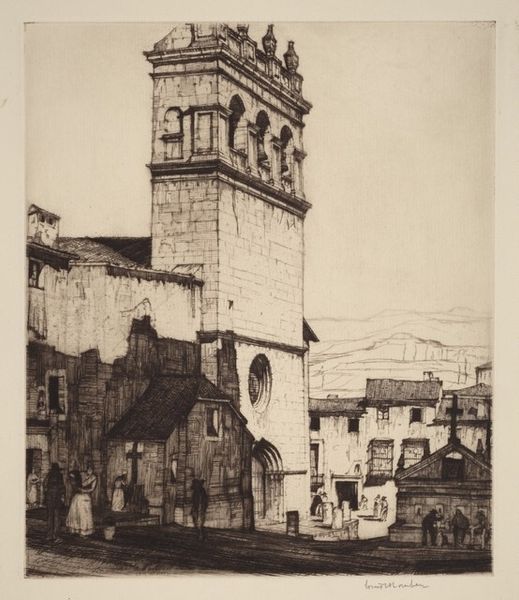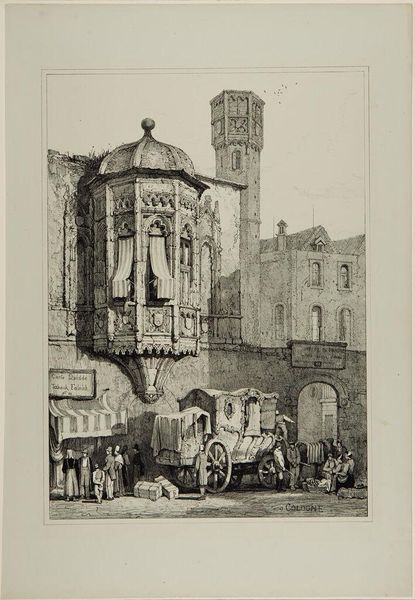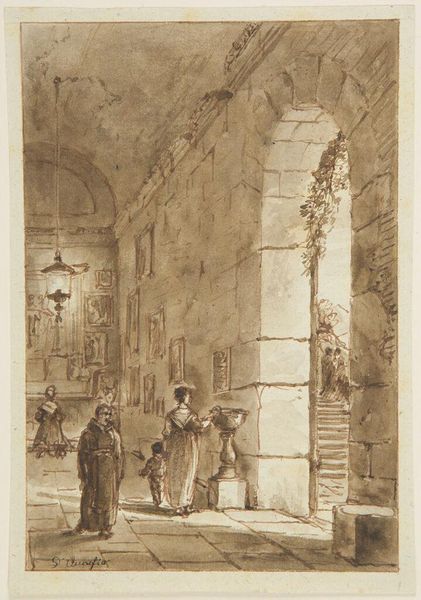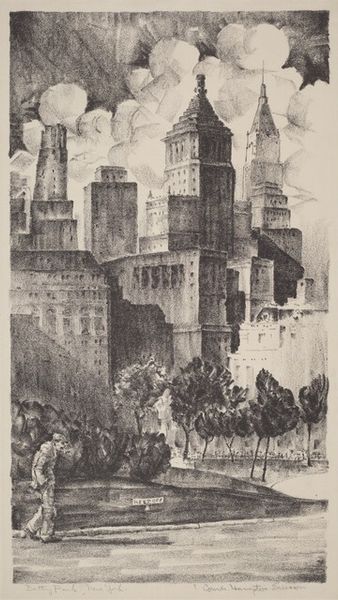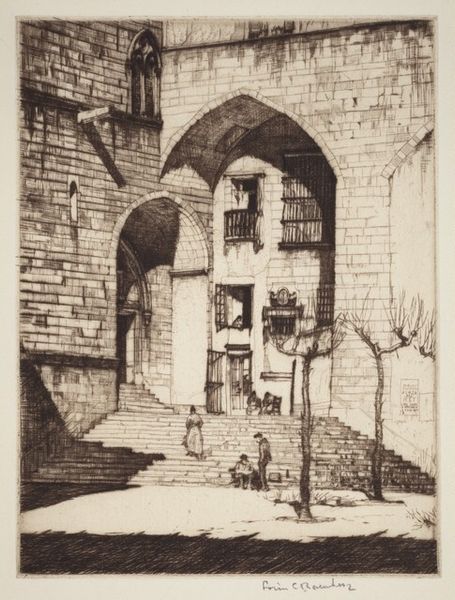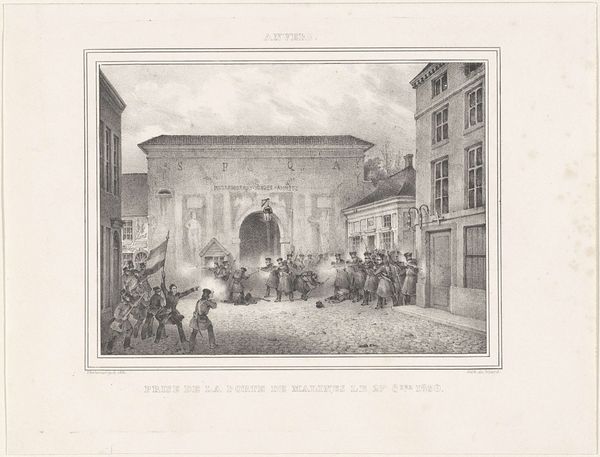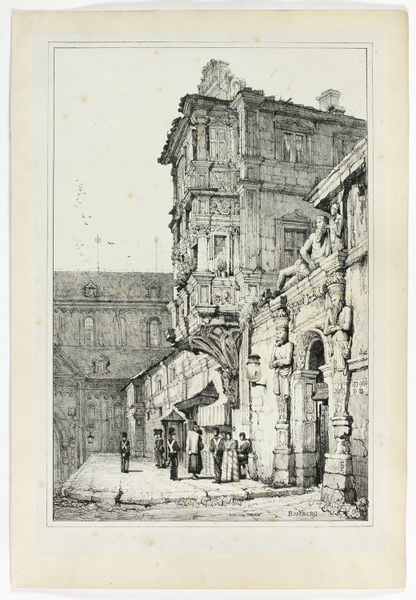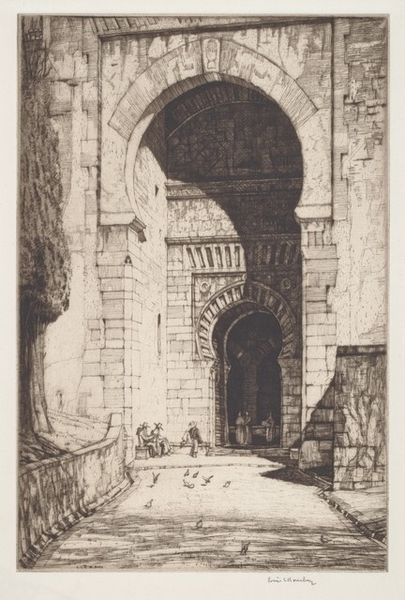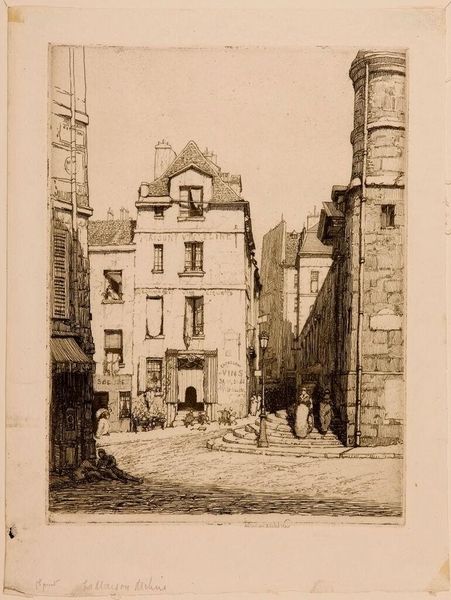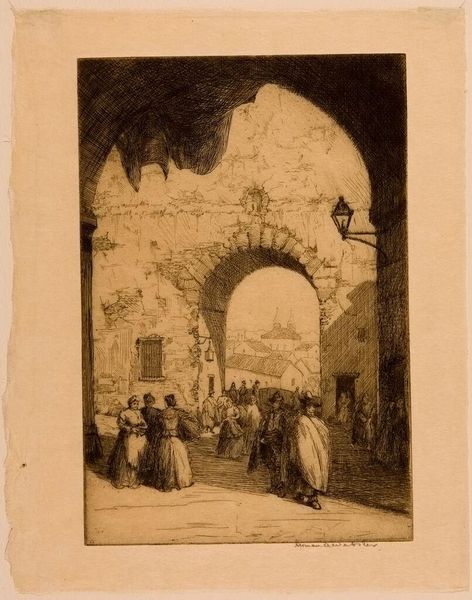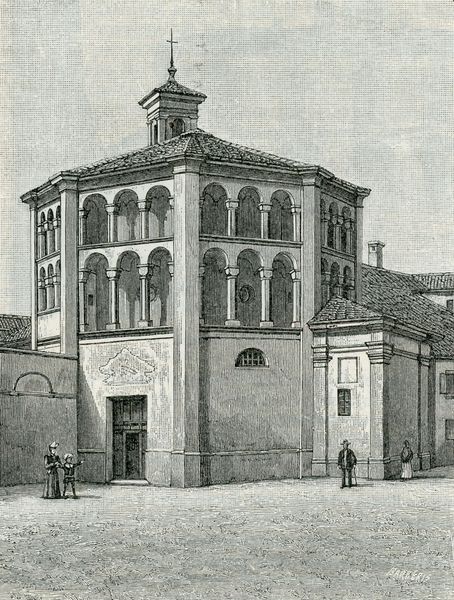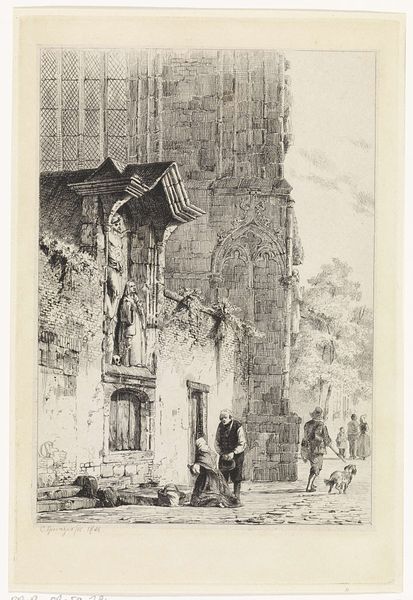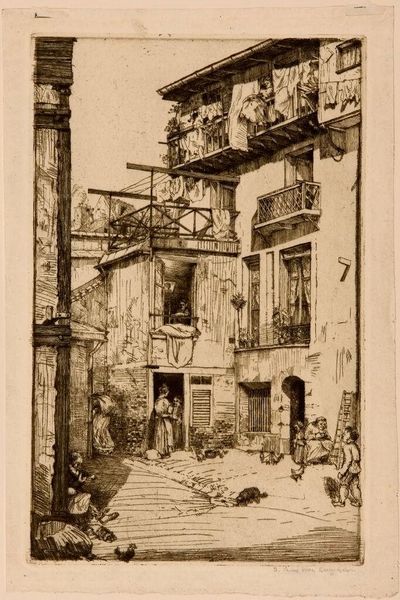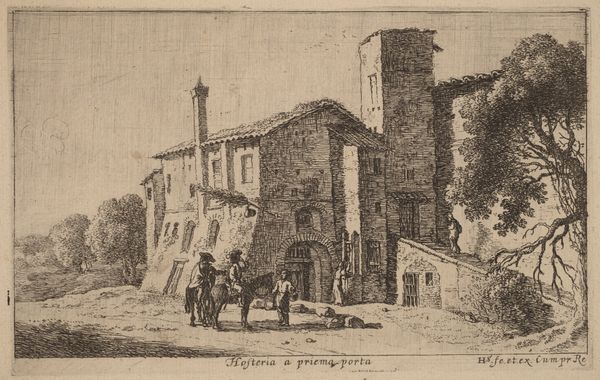
print, etching
# print
#
etching
#
landscape
#
cityscape
Copyright: National Gallery of Art: CC0 1.0
Editor: Here we have Lionel Lindsay's "Santa Cruz, Toledo," an etching from 1946. It gives me a real sense of the timeless quality of the city; the architecture looms over these working people like it always has and always will. What captures your attention in this piece? Curator: For me, it's the way Lindsay captures the intersection of labor, religion, and the built environment in post-war Spain. Consider how the imposing facade of the Santa Cruz monastery—a symbol of historical power and religious authority—dominates the scene, while the working-class figures and their mules are relegated to the foreground. What do you make of that spatial relationship? Editor: It definitely feels like a hierarchy is being represented. The church is literally looming. Are you suggesting this artwork can be viewed as a commentary on social inequalities? Curator: Precisely! The etching's detailed depiction of the architecture versus the more gestural rendering of the people implies a critical perspective on class and power structures. Furthermore, Lindsay, an Australian artist, is representing a Spanish scene. How might we interpret this outsider's perspective? Is it simply an objective observation, or does it carry its own biases and assumptions about Spanish society? Editor: That's a great point. Maybe he's romanticizing or exoticizing the scene in a way a local artist wouldn't. I hadn’t thought about the colonial gaze at play here. Curator: It's crucial to consider the colonial gaze, especially when interpreting landscape art made by artists from dominant cultures representing scenes from historically colonized regions. Even in the absence of overt colonial imagery, power dynamics can subtly shape our perception of these places and the people who inhabit them. What do you think the muted palette adds to that feeling? Editor: The monochromatic tones give it a very austere, documentary-like feel, almost like a record of a particular time. I see what you mean about considering it as a visual statement on power relations. Thanks! Curator: Absolutely. By exploring the socio-political context, we gain a richer, more critical appreciation of even seemingly straightforward landscape etchings.
Comments
No comments
Be the first to comment and join the conversation on the ultimate creative platform.
